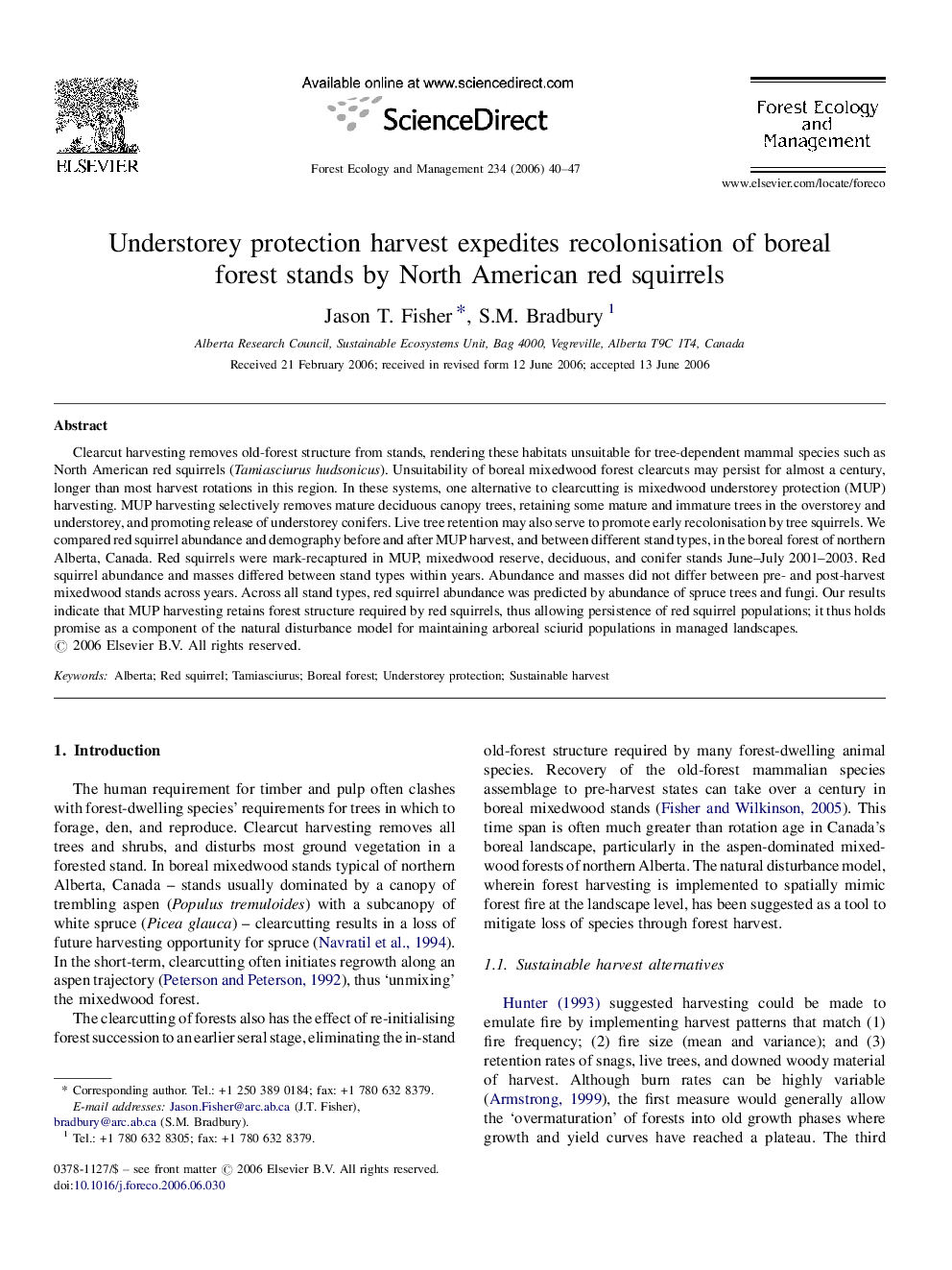| کد مقاله | کد نشریه | سال انتشار | مقاله انگلیسی | نسخه تمام متن |
|---|---|---|---|---|
| 90191 | 159372 | 2006 | 8 صفحه PDF | دانلود رایگان |

Clearcut harvesting removes old-forest structure from stands, rendering these habitats unsuitable for tree-dependent mammal species such as North American red squirrels (Tamiasciurus hudsonicus). Unsuitability of boreal mixedwood forest clearcuts may persist for almost a century, longer than most harvest rotations in this region. In these systems, one alternative to clearcutting is mixedwood understorey protection (MUP) harvesting. MUP harvesting selectively removes mature deciduous canopy trees, retaining some mature and immature trees in the overstorey and understorey, and promoting release of understorey conifers. Live tree retention may also serve to promote early recolonisation by tree squirrels. We compared red squirrel abundance and demography before and after MUP harvest, and between different stand types, in the boreal forest of northern Alberta, Canada. Red squirrels were mark-recaptured in MUP, mixedwood reserve, deciduous, and conifer stands June–July 2001–2003. Red squirrel abundance and masses differed between stand types within years. Abundance and masses did not differ between pre- and post-harvest mixedwood stands across years. Across all stand types, red squirrel abundance was predicted by abundance of spruce trees and fungi. Our results indicate that MUP harvesting retains forest structure required by red squirrels, thus allowing persistence of red squirrel populations; it thus holds promise as a component of the natural disturbance model for maintaining arboreal sciurid populations in managed landscapes.
Journal: Forest Ecology and Management - Volume 234, Issues 1–3, 1 October 2006, Pages 40–47